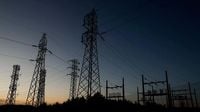On April 28, 2025, Spain and Portugal experienced a massive electricity blackout that plunged millions into darkness and chaos. The Iberian Peninsula was disconnected from the European electricity grid shortly after midday, leading to widespread power outages that affected businesses, schools, universities, government buildings, and transport hubs. Traffic lights went dark, causing gridlocks, while many people found themselves trapped in lifts or stranded on trains in remote areas. The blackout lasted for over 12 hours, paralyzing key infrastructure and sparking urgent calls for answers.
Nearly two months after the unprecedented event, on June 17, 2025, Spain’s Minister for Ecological Transition, Sara Aagesen, presented a comprehensive report detailing the causes of the blackout. The findings pointed to a multifactorial origin, implicating both the national grid operator, Red Eléctrica, and private power generation companies. According to Aagesen, the partly state-owned grid operator miscalculated the power capacity needs for that day, resulting in the system lacking sufficient dynamic voltage capacity to handle the stress. "We just did not have the means to stabilise the grid," she stated, highlighting Red Eléctrica’s “lack of foresight” as a significant contributor to the disaster.
The blackout began with rare oscillations detected in the European electricity system, followed by an anomalous voltage oscillation reported by a Spanish operator. Shortly after noon, a steady voltage increase triggered substation failures in southern regions including Granada, Badajoz, Sevilla, and Huelva. Within five seconds, these failures cascaded, causing a total collapse of the electricity system at 12:33 PM and leading to a loss of synchronization with the European grid through the limited power lines connecting Spain to France.
A key technical failure involved the grid’s inability to manage voltage oscillations or absorb excess “reactive power.” Aagesen criticized private generators for not regulating the grid’s voltage shortly before the blackout. She revealed that some conventional power plants, which were available and legally required to stabilize the grid, “had not done what the law required them to do.” Others were “improperly switched off,” though she declined to name specific plants or companies, citing requests for anonymity from electricity firms. This failure to act was a critical factor in the grid’s collapse.
Prime Minister Pedro Sánchez had hinted at private electricity companies’ involvement the day after the outage, promising to demand “all the relevant accountability” from them. The new report confirms that these companies failed to absorb the voltage they were supposed to during high tension periods, despite being paid to do so. However, the government has consistently denied that Spain’s increasing reliance on renewable energy sources or its rejection of nuclear power contributed to the incident. This stance has drawn criticism from opposition parties, with Alberto Núñez Feijóo, leader of the main opposition People's Party (PP), accusing Sánchez of prioritizing green policies at the expense of reliable power supply. “You have led Spaniards into the dark,” Feijóo said, underscoring the political tensions surrounding Spain’s energy strategy.
The investigation also ruled out a cyberattack as the cause of the blackout, though it identified vulnerabilities and security gaps in the network that could expose the grid to future attacks. These findings have raised concerns about the resilience and security of Spain’s electricity infrastructure in an increasingly interconnected European grid.
Adding complexity to the situation is the role of Beatriz Corredor, president of Red Eléctrica and a former Socialist minister. She had previously insisted that the grid operator was not at fault, but the new report’s findings challenge this position, intensifying scrutiny on the regulator’s management and decision-making.
The blackout’s aftermath revealed the fragile balance in managing a modern electricity grid, especially one integrating diverse energy sources and connected to a broader European network. The failure to anticipate and respond effectively to voltage fluctuations exposed systemic weaknesses, from operational miscalculations to lapses in regulatory oversight and private sector compliance.
Spain’s energy model, which emphasizes renewable energy, has been under the microscope since the blackout. While the government maintains that renewables were not to blame, the incident has sparked debate over the challenges of maintaining grid stability in the face of variable power generation. The report’s emphasis on conventional power plants’ failure to stabilize the grid suggests that a more robust backup system and better coordination between operators and generators are urgently needed.
In the wake of this crisis, the Spanish government faces mounting pressure to overhaul its energy infrastructure and regulatory framework. The goal is to ensure that such a widespread and disruptive blackout never happens again, safeguarding both the reliability of power supply and national security.
As Spain and Portugal recover from the blackout, the incident serves as a stark reminder of the complexities and vulnerabilities inherent in modern electricity grids. It underscores the need for vigilant oversight, transparent accountability, and a balanced approach to energy policy that can meet environmental goals without compromising system stability.
Ultimately, the April blackout has opened a critical conversation about the future of energy in Spain and beyond, prompting policymakers, industry leaders, and the public to reconsider how best to power a nation in an era of rapid technological and environmental change.





